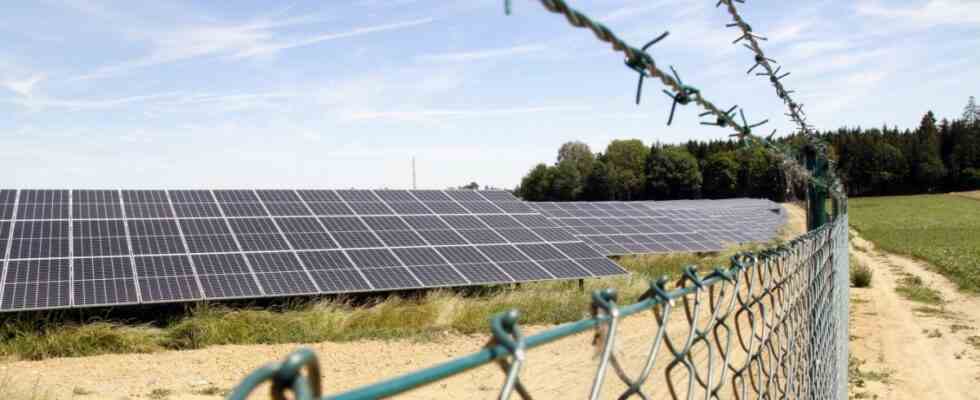The largest open-space photovoltaic system in the district of Starnberg south of the Lindau motorway (A 96) near Gilching-Geisenbrunn was completed six weeks ago. Since January, around 36,000 modules, 75 inverters and six transformer stations have been erected at a brisk pace on the farmland in a corridor 200 meters long and one and a half kilometers long. But the system, which according to the planning office cost around eleven million euros and has been certified since June 20, still could not go online – and therefore could not supply the green electricity that is supposed to supply almost 4,500 Gilchinger households.
As with other renewable energy projects, there is a “bottleneck” at the end, says qualified engineer Robert Sing from the operating company “Sonnenenergie Gilching GmbH & Co. KG”, outraged at the snail’s pace. Because with this “bureaucracy, hopelessly overburdened certifiers, paperwork and constant new guidelines with technical connection rules” the energy transition and climate protection will be further slowed down, Sing fears. But now the electricity supplier Bayernwerk Netz has announced that the photovoltaic system of the A 96 is connected.
Until then, a 20 meter long medium-voltage cable has to be laid to the transfer station at the Argelried motorway roundabout and a measuring transformer installed. But the Bayernwerk could have done that long ago, says project planner Sing, annoyed by the delays. The expert for solar parks calculates that around 20,000 euros were lost every day due to the lack of feed-in of up to 120,000 kilowatt hours of electricity. Sing emphasizes that his Landsberg office had already applied for the certification for the PV system on the 14-hectare area on the motorway in good time six months before the start of construction – i.e. in summer 2021 – in order to ensure seamless grid connection.
District Administrator Stefan Frey (CSU) demands that the procedures urgently need to be streamlined
Steffen Schubach, who is responsible for planning, construction and network customer support at Bayernwerk, knows these problems. “It just takes time,” he says, giving reasons for this. The substation has to be rebuilt and the company’s own network has to be strengthened for the new electricity. In addition, you have to comply with the regulations, Schubach justifies himself. However, he also knows that the “litany of documents to be filled out” and a lack of personnel for the acceptance of these large PV systems lead to waiting times.
“It doesn’t surprise me at all,” says Starnberg District Administrator Stefan Frey (CSU), who doesn’t want to blame Bayernwerk Netz. But it is urgently necessary to streamline procedures and free oneself from the bureaucratic ballast of detailed specifications. Frey, who has always supported the Gilching municipality’s solar cell project as an important signal for the use of solar energy, warns that if everything is balanced and you “just go step by step” then the energy transition cannot be achieved.
In addition to the general planner Sing and his business partner Thomas Tronsberg, the municipal utility company Gilching (KU) is a limited partner and mostly farmers are involved in the operating company. The module output of the photovoltaic system is 16,220 kilowatt peak (kWp), so according to the operator, according to the Renewable Energy Sources Act (EEG), almost 18 million kilowatt hours (kWh) of green electricity should flow into the grid every year.

